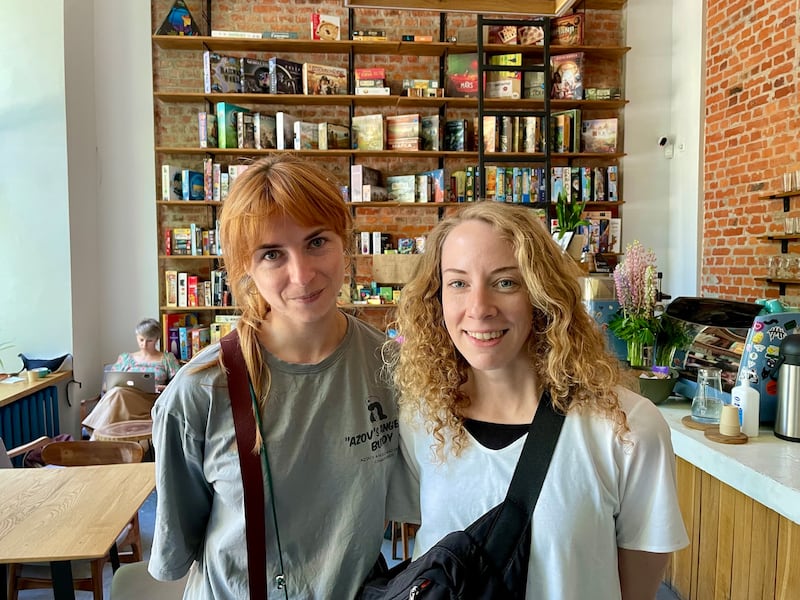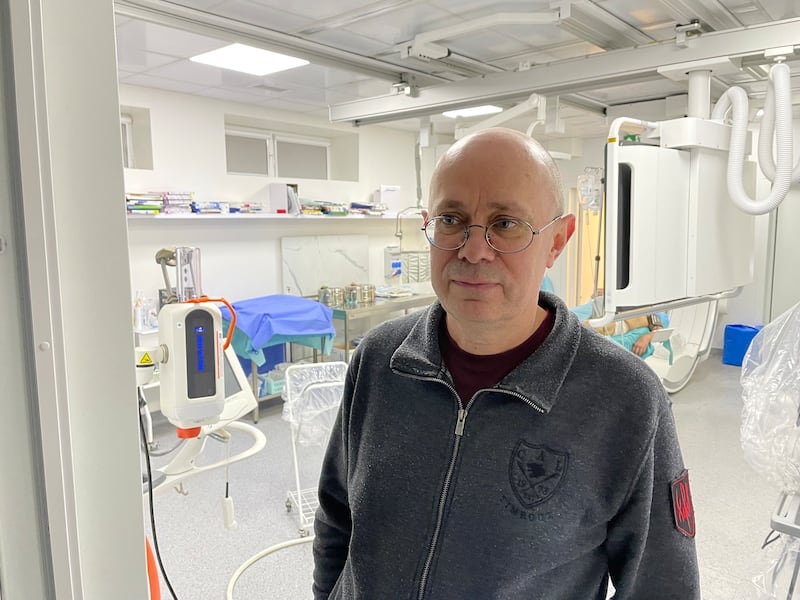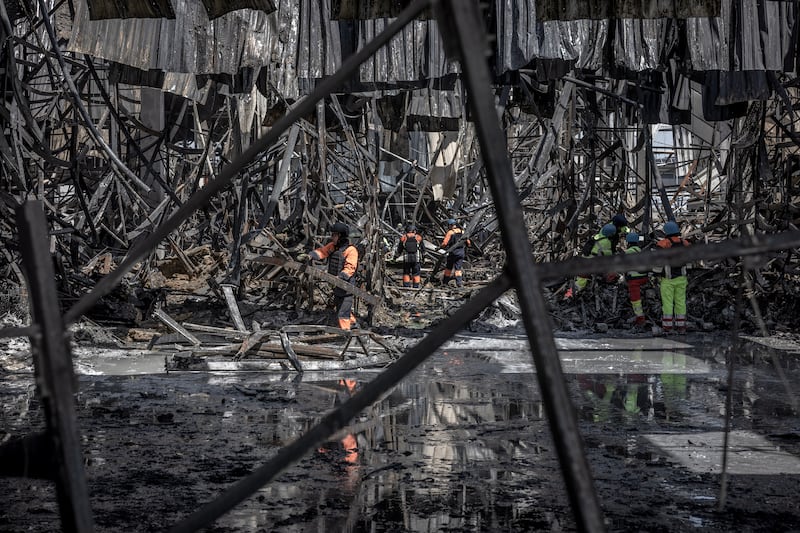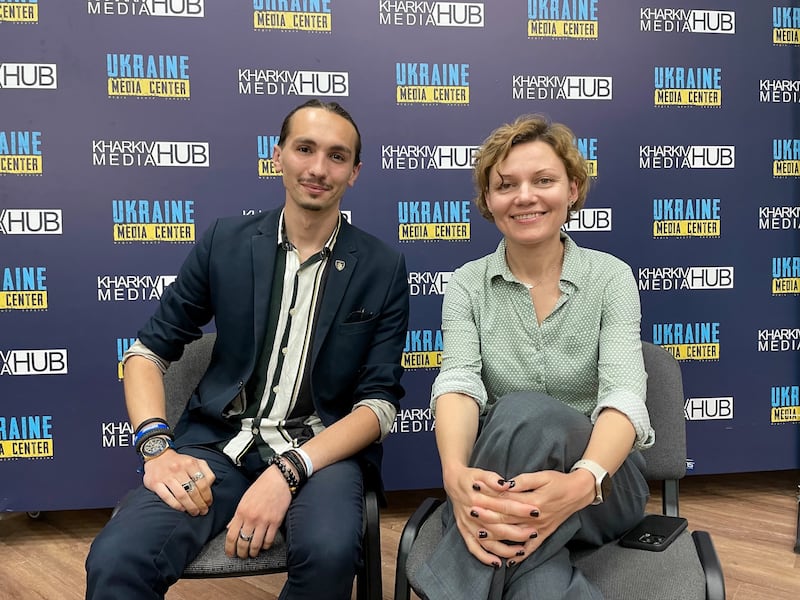The windows of her Kharkiv cafe were blown out this year by a deadly Russian missile strike, and bombs and rockets now hit the city every day, but Liliia Muntian says nothing was worse than being 1,000km away in the relative safety of western Ukraine.
She has nothing against the other end of the country but, like so many people in Kharkiv, Muntian (31) feels most comfortable and useful at home in Ukraine’s second city despite the constant threat from a hostile power whose border is just 35km to the east.
“At the start of the war we left Kharkiv and spent three months in western Ukraine...that was the worst time,” Muntian says at Pakufuda, the cafe she opened in 2020, two years before Russia’s all-out invasion.
“It was terrible,” confirms her friend Tetiana Siniuhina, who runs a bakery called Pouhqué in the same building in a leafy corner of central Kharkiv.
RM Block
“I feel calmer under shelling here than being somewhere else and reading about it..being alone in a more peaceful place I would feel out of context, out of my real life,” Muntian says.

“If I was in Kyiv or Lviv (in western Ukraine) it would be more difficult for me,” Siniuhina (31) adds. “Here the war is all around me – I feel it and I know it’s here – but I also feel that I can do something about it. So it is difficult, but when I do a lot of work with the bakery or as a volunteer it helps me.”
About one million people fled Kharkiv after the full invasion of February 2022, when it seemed to be only a matter of time before Kremlin’s vast military overran a city that is a mere 40-minute drive from Russia.
Yet its defences held – even as relentless shelling destroyed buildings and drove remaining residents into cellars, metro stations and other makeshift bomb shelters – and led to a counterattack which liberated the entire Kharkiv region in September of that year. The city’s population has now swollen back to about 1.3 million, and includes many returnees and people displaced from frontline and occupied areas.
“There were only a couple of cafes open when we came back, but we saw there were people here and they needed to feel that the city was alive and that they had somewhere to go,” Muntian says. “And giving jobs to people was one of the most important things for us. We wanted people to have work and some money, so we reopened in August 2022.”
At first Siniuhina had to have cane sugar posted to Kharkiv from other cities to bake some of her pastries, and the electricity supply could be patchy: “But as time went on more and more products were available again here. And now we have three generators, so power is not a problem.”
The postal system and other services and supply chains have adapted to the war: supermarkets are well stocked, trains run all over Kyiv-controlled territory, power firms work to repair damage to the grid, and healthcare has not buckled under the weight of military and civilian casualties. Amid near-constant air raid alerts in Kharkiv last week city workers swept paths and planted flowers in its main park.

“It is a surprise for me how the whole system is resistant to all this,” says Igor Polivenok, the head of interventional cardiology at Kharkiv’s Zaitsev Institute for General and Emergency Surgery.
“The electricity power system and city services are resilient to these attacks. Despite all the power plants being destroyed recently in Kharkiv region we still have electricity,” he says. “The chains of city services and medical supply services was re-established quite soon after start of war and they work pretty well...In general if I didn’t hear explosions very often I wouldn’t say that war is only 20km from Kharkiv.”
As he acknowledges Polivenok speaks from the perspective of someone who only left Kharkiv for a few weeks in 2022 and lived and worked here when Russian tanks were still on the ring road, lobbing shells and mortars into the city centre. “Those who stayed in Kharkiv then just tried to hide. So now, despite this everyday risk, our feeling of security has changed. We accept this risk much more than we did at the very start. There is a kind of fatalism.”

The streets are busy for much of the day, only emptying out as darkness falls, the metro prepares to shut down at 9:30pm and the 11pm–5am curfew approaches. Most people carry on with what they are doing when air raid sirens sound because alerts come so often and can last for so long – 16 ½ hours being a new record set this month.
Kharkivites have had to learn how to calibrate risk to maintain a semblance of normal life, but they are not impervious to danger, and the current escalation in Russian air strikes on the city and ground attacks on the region has made many reassess their options yet again.
Russian bombs, missiles and drones now hit Kharkiv nearly every day, and last week at least 25 people were killed and dozens injured in strikes on a DIY store and printing house. At the same time there is heavy fighting in border areas of the region, bringing the front line to within 20km of the city’s northern fringe.
“Among our friends, especially those with children, some are thinking about leaving Kharkiv now – not to go forever but to take a break, go somewhere safer for a while and see how it goes,” Muntian says. “We see it and feel it in the air here at the cafe. One day we have lots of people and the next day almost no one. You see these waves of how people react.”

Pakufuda sits near a constructivist building called Derzhprom, an abbreviation of “state industry”, which was dubbed “the first Soviet skyscraper” when it opened in 1928. A cluster of clean, angular towers linked by high enclosed walkways and topped by a television antenna, it is still a striking landmark today.
One of its many halls now hosts the Kharkiv media hub, which journalist Natalia Kurdiukova founded two years ago to support local and foreign reporters and host press conferences and other events.
As the air raid siren howls again she is sitting with colleague Ruslan Misiunia and a visiting Kyiv journalist and discussing the film Slovo House, which tells the story of an apartment building of the same name about a kilometre away. The Soviets built it in the 1920s to house Ukrainian writers – “Slovo” means “word” – dozens of whom were later jailed and executed when Josef Stalin purged Ukraine’s intelligentsia.
Slovo House has been widely discussed in Kharkiv as Russia tries again to destroy the distinct identity and culture of Ukrainians, and tickets have sold well at local cinemas, some of which halt screenings during air raid alerts, while others let the films roll on.
Kharkiv’s cultural life is still vibrant, and exhibitions, concerts, plays at pop-up venues and talks and workshops by writers and other creative people are plentiful and popular.
“It’s very important to protect the rich cultural atmosphere in Kharkiv, where we have lots of writers and musicians and constant conversations about culture. We must not only survive but continue to do fulfilling things,” says Kurdiukova, who also cofounded local media outlet Nakypilo. “Sometimes it’s hard to decide where to go because so many interesting things are happening at the same time.”
[ Daniel McLaughlin: The young Dubliner flying strike drones for UkraineOpens in new window ]
Kharkiv’s resilience is real and remarkable, but some of its residents roll their eyes when they hear nicknames for the city such as “nezlamniy” (unbreakable) or “zalizobetonnyi”, the Ukrainian word for the reinforced concrete that was used for the first time in the Soviet Union to build Derzhprom.
“I don’t like us being described that way because we’re actually very tender. We need to get enough sleep and allow ourselves a glass of wine and a chance to relax sometimes. We shouldn’t think we’re indestructible and other people shouldn’t assume that we’re so strong – we could break if we don’t take care of ourselves,” Kurdiukova says.
“None of us can be in a normal psychological state, even those abroad, because there is war in our country. But the worst thing is to feel that you’re not being useful. So we are psychologically healthiest when we are here in Kharkiv because we are being useful and doing what we can for victory.”
Another exodus from Kharkiv is unlikely unless the security situation becomes critical because people living here now are either too poor to leave, have tried and rejected refugee life, or have resolved to help keep the city going for as long as possible.
“We are working non-stop,” says Polivenok. “So I have to do my job for as long as Kharkiv is Ukrainian and while the hospital is functioning.”
Muntian and Siniuhina have discussed whether they would leave again, but hope it will never come to that.
“We have to talk about it. We can’t believe in magic, we have to live in real life...If the Russians come too close and start shelling so much that it’s really dangerous to go outside, and no one is coming to the cafe and bakery and there’s no one to work here, then we would reconsider,” Muntian says.
“And if there’s fighting in the city then people will need to leave to let our soldiers and medics work. So this is our red line – but it’s really, really red.”
- Sign up for push alerts and have the best news, analysis and comment delivered directly to your phone
- Find The Irish Times on WhatsApp and stay up to date
- Our In The News podcast is now published daily – Find the latest episode here























